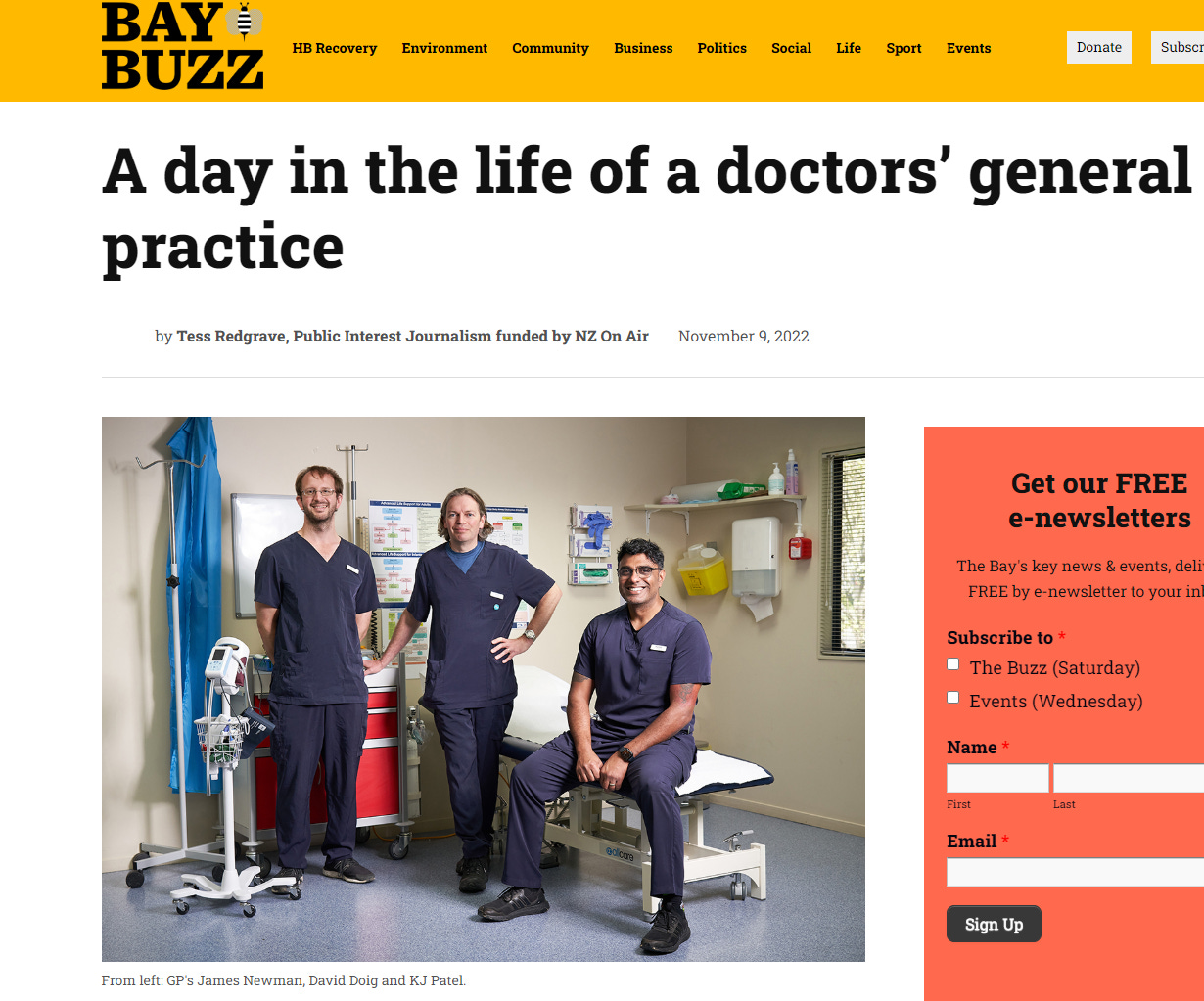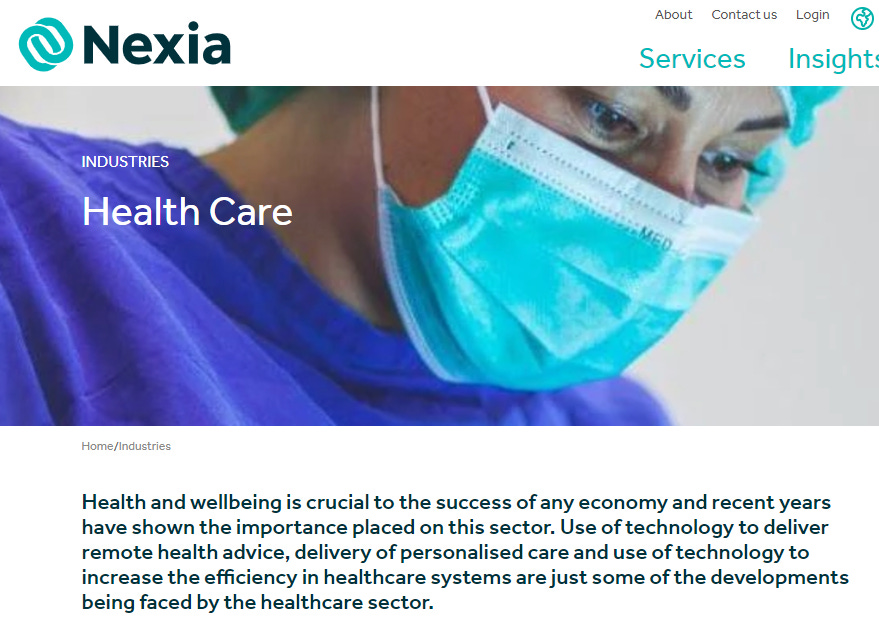GPs, ESGs and Profits from Covid: Nudges Towards eHealth
Health Apps, Data Harvesting, Jabs, Screening and Fees. Patients needs or profits for Shareholders?
Who owns GP practices in NZ and are they being run with patients’ needs front of mind? In 2016 the NZ College of General Practitioners (NZCGPs) published a guide to GP surgery ownership, trying to ‘demystify it’. Three years later, the commercial opportunities for these stakeholders took on new meaning during covid. Here, I look at one case study of a GP practice in New Zealand for some more clues about their unethical compliance with the covid era totalitarianism.

Last week I started looking at why the law firms acted in lockstep with the covid era policies. More on that soon. But why did the GP surgeries also comply so easily? Was it interference from commercial pressures, profits for shareholders, rather than patients’ needs? I want to look at one example of the ownership of a surgery that perhaps partly explains some of the motivations for covid compliance.
First, read this interesting article from 2022, called A Day in the Life of a GP at Te Mata Peak Practice - a Doctor explains about his concerns for the ‘worried well’:
“The medical conditions GPs are dealing with on a daily basis are becoming more complex,” adds David. “People are living longer and they have multiple co-morbidities or conditions at the same time. With the elderly a lot of the warning lights don’t go on, they don’t get the symptoms that tells them something is wrong. They don’t cough and don’t have a fever, but they’ve got pneumonia. We play a lot of ‘spot the cancer’ here too and it’s not always easy.” (my emphasis)
In this case study of Te Mata Peak Practice (TMPP) there have been many - some would say unwelcome - changes over recent (covid) years, including the introduction of a ‘Call Centre’ (really?) and ‘Treatment’ rooms, the latter includes a Nurses’ Station set up to handle emergencies.
“[The Treatment room] has an ECG machine, defibrillator, oxygen, suction machine/aspirator for clearing obstructions from airways, a plastering station, suture kits, and equipment to take bloods and specimens. Adjacent to this is the new and ground-breaking tele-consult room (nicknamed the ‘goldfish bowl’) where Emergency Care Paramedics (ECPs) deal with acute patients over the phone. Every call that comes into TMPP is fielded first by a three-person Call Centre down in the basement, colloquially-named the ‘Mushroom Room’. If calls are acute, they are logged with the ECPs who will do a fast call-back and assess whether to forward on to outside emergency services, to a TMPP GP, or carry out their own phone or face-to-face consult – both of these charge the usual GP-visit fee.” (my emphasis)
So, less face-to-face time with patients, but the same fees apply? In August 2022 the TMPP directors wrote to their patients explaining how they felt they had to increase fees because of the Government’s significant funding cut in real terms. But…
Te Mata Peak Practice gained an estimated NZ$325,387 for the covid jabs their staff administered at the height of the roll-out (see here for details). But that’s the only reason why the covid compliance was a ‘done deal’…
Let’s follow the money again…
New Zealand has a sparse population of older-generation citizens. What is driving these changes that have led to increased workload for healthcare staff? Why is there such a strong push towards the introduction of so much technology, like the ManageMyHealth App I wrote about, virtual consultations, App and email notifications (to patients and staff), screening, testing, re-testing and of course, multiple doses of various [mRNA] ‘vaccinations’?
Despite what the gov-sponsored article about TMPP said two years ago, it doesn’t look like much progress was made in providing shares in TMPP to the staff: the shareholders are the Directors mentioned in the article. And as I have pointed out before, often the revolving doors between these entities and Government Depts proves highly profitable:
More of NZs Revolving Doors of Power & Money
I’ve written before about Public Private Philanthropic (or perhaps more accurately thanks to Margaret Anna Alice ‘Philanthropathic’) Partnerships (PPPPs) that increasingly are exposed as the foundation of covid era totalitarianism. In particular, along with others like
‘KJ’ quoted in the article - Kunjay Patel -is a Director of TMPP, along with David Doig and James Newman. But James Newman is also listed under Newman Medical Services Ltd., which has Independent Trustee Advisory Services Ltd (ITASL) as its main shareholder.
And here’s where things turn unexpectedly complex - ITASL have multiple shareholders, including Mark Knofflock who also work for Nexia NZ - part of Nexia Intl - a global accounting and business network undertaking auditing, advice and taxes. Hamish Pringle also a shareholder and works for Nexia. So is Ben Gilmour. What is Nexia?
Nexia New Zealand provides expert advice and personalised solutions to help your business succeed. We are trusted partners that help our clients with all of their business advisory and accounting requirements. As a member of Nexia International, the eighth largest global accounting network, you’ll have access to leading professionals and the latest business insights from New Zealand and around the world.
So what is this ‘expert advice’ Nexia staff offer? What exactly is the relationship between TMPP and Nexia? What impact does this have on TMPP patients and does this have anything to do with Nexia’s US$multimillion international healthcare sector? Note: I’m not suggesting that these GP directors don’t genuinely care for their patients, but are they being misled? Are they victims of the indoctrination embedded in their training, the BigPharma and BigTech propaganda in their professional societies and journals? And perhaps also their own egos?
Teaching to the Test
As an educationalist, I’ve published extensively about how flawed assessments can present data that works in favour of those setting the tests. It’s one of the main problems with what often cannot be ‘measured’ (like the art of teaching and learning, and healthcare) when commercial interests interfere. And in this case study, we can see how a GP practice like TMPP, which wants to ‘succeed’ by responding to the needs of its patients, falls into the trap of Public, Private [Philanthropathic] Partnerships. I have written on this platform about this topic extensively e.g. here and here.
Nexia Intl are a global, commercial auditing and tax service. The data Nexia collect are extremely valuable to Impact Investors like Legatum as I’ve written about in the past. Are these stakeholders likely to be interested in the traditional GP/Patient relationship, where consultations are in person (maybe even in the patient’s home), and there is a mutual respect and trust in each other? Are they interested in off-label or holistic treatments or basic good nutrition? I think we know the answer.
Nexia is heavily invested in the WEF/UN Agenda 2030. Obtaining targets and increasing profits is their priority. For instance, in their latest report “Sustainable Accounting: How ESG is Impacting the Market” the authors underline the importance of their operations:
Nexia run workshops on promoting Climate Change strategies like carbon credits, connecting these to modelling of accounts and partner-company objectives.
So the question we’re all left with, is why a relatively small GP practice in humble New Zealand, would have shareholders partnered with Nexia Intl, part of the ESG machinery? Is it connected to the international finance company that owns the MMH App? Or the MyIndici App (which I’ll write about in next week’s newsletter). Maybe the policies rolled out to patients at this surgery represent a pilot study on how to overcome challenges and non-compliance with the WEFs NWO. We are a compliant population, ripe for another experiment?
Finally, here is a comment from a (anon) patient at TMPP that I’m sure captures the views of many of us:
“As a patient of this practice and someone who grew up with the friendly Dr popping into home when we as kids had a major illness/ injury it has been a difficult transition to the “modern” Drs ways. From being able to communicate with the Dr personally to having to go through at times many different people before you see your Dr was totally foreign and very difficult to come to terms with. Also there was/is no longer the personal patient Dr association which I know seemed almost at times better than the medication. […] I received in an email the next set of changes we, as patients are being subjected to today. There has been another step put in place before we can get to see our GP. Personally I’m not very happy about it but I am also not that out of touch to understand changes happen and obviously we have to accept them. It’s all part of being just a “number”. The practice has now reduced accessibility to services over the weekend and have suggested using a help line, ring them and tell them your symptoms and an electronic device will diagnose and provide some advice. Quite a blow for me as when I first went to this practice and met my GP I said that he doesn’t need to worry about me using “Dr Google” as I was aware of the issues that can arise […]. To my surprise my new GP said Google is a great tool and he recommended it. It’s a different world out there but I cannot see it’s a better one.”
This is global. Wherever you are in the world - what is happening in your local surgery? Are you being ‘nudged’ into staying away from the clinic, downloading Apps, engaging in more and more screening programs and eHealth monitoring? Who owns your GP and where are all our taxes being spent? Please let me know below.
Buy me a Coffee here so I can help others! Thank you!









My apologies to those subscribers who received this post twice - a Substack settings glich that apparently they are working on!
Do not consent. You are the patient. Refuse digitaliztion of your life.